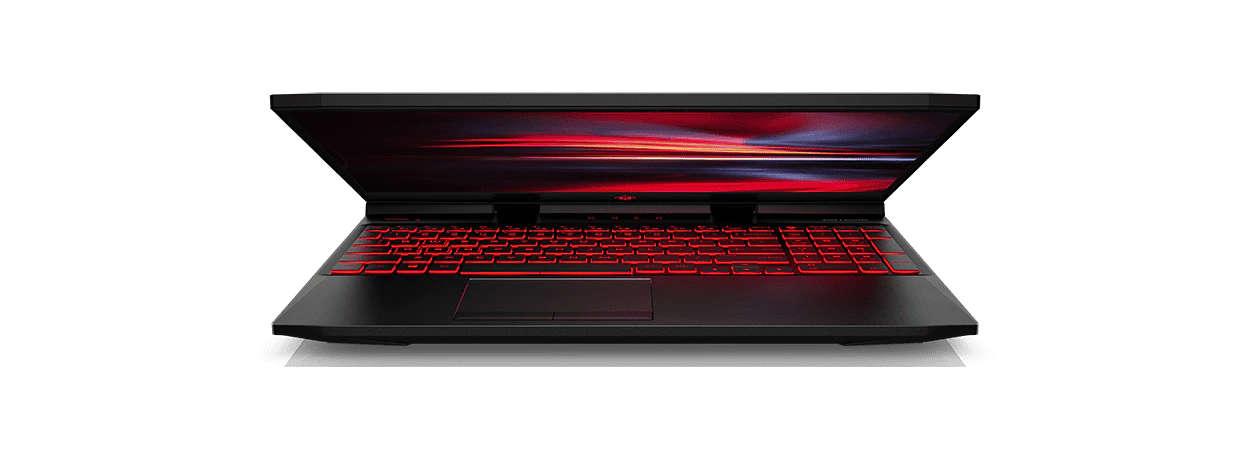Thank you for visiting the HONG KONG HP Store
-
Contact Us
CONTACT USChat with us
- Our specialist are here to help
- Live chat
- Sales
- 85264507529(WhatsApp)
-

- Post Sales
- 85230016720(WhatsApp)
Mon-Fri 8.30am - 5.30pm
(exc. Public Holidays)
Live product demo
Store finder Locate our storesSubmit feedback We value your opinion! - Location
- My Account
How to Choose the Right HP Monitor for Your Needs


In many ways, a good monitor is as important as your CPU. Gone are the days when people invested more in the core components and less in the monitor quality itself. From creating social media content and streaming high-quality videos and games to professional works such as developing software or creating superior designs, everyone requires a quality monitor with a reliable display.
Whether you opt for all-in-one PCs or assemble them yourself, a good monitor allows you to enjoy the maximum performance of your computer. However, it can be confusing when selecting the right features for your monitor. For example, what is the best display and resolution you should have, which panels are most effective, and what is the correct screen size and refresh rate?
We’ve provided a comprehensive buying guide to help you make the best possible choice from a wide range of offerings as you shop for a monitor.
Types of monitors
When you are looking to invest in a PC monitor, you must have a strong understanding of the available monitors and which will best suit your needs. A business monitor, for example, may have basic features with a standard refresh rate, but it may not be best suited for users looking to use it for high-end gaming.
Among various PC monitors, HP monitors stand out with top features for the price. If you are considering budget, endless choices are provided under each price category.
For more clarity, let’s talk about the type of monitors available today and the features you should consider.
LCD monitors
Liquid crystal display (LCD) monitors have flat panel screens comprising liquid crystals at the back of the screen, generating well-balanced and well-lit images. The LCD monitors also consume lesser power and emit less radiation than its predecessor.
LED monitors
Light-emitting diode displays (LED) are also flat-screen monitors. These monitors are found to be lightweight and have a slim profile. In general, LED monitors consume lesser power and have a low running temperature. Technically, both LED and LCD monitors have the same liquid technology, but differ in implementation. Other benefits of LED monitors include better contrast and colour accuracy, leading to better image quality.
OLED monitors
The OLED monitors comprise a flat light-emitting display, which is significantly brighter and thinner than other monitors. These monitors tend to have higher refresh rates and produce better contrast when compared to LCD monitors. OLED displays are made up of organic light-emitting diodes between the conductors and do not require a backlight like LED or LCD monitors.
Types of panels
While knowing about the types of monitors is essential, you must be aware of different panel types for the monitors.
Below are some of the most commonly available panels in most modern monitors:
TN panels
Twisted nematic (TN) panels can be rightfully categorized under the older generation of monitors in the market. These monitors provide superior refresh rates with low latency. TN panels are best suited for gamers who seek to invest more into the core components, such as graphics and a better CPU, instead of a monitor. However, these panels produce inaccurate colours and have a significant input lag.
IPS panels
The IPS (in-plane switching) panels are the most commonly used on computer monitors. IPS technology was developed to improve a monitor's colour quality and viewing angles. However, many companies have since adopted IPS technology under different acronyms.
Some pros of IPS panels include accurate colour reproduction, improved refresh rates, and longer lifespan. Similarly, these panels struggle with lower contrast ratios and have higher power consumption.
VA panels
Vertical alignment (VA) panels can be considered a combination of TN and IPS. While VA panels have the best contrast ratios, they struggle with viewing angles compared to the performance of IPS panels.
Likewise, the screen brightness is inaccurate from all the viewing angles and is known to have a slower response rate. There are monitors with VA panels with higher refresh rates, but they lack latency, resulting in motion blur. As such, these panels are not suggested for gamers.
Screen sizes you should consider
When buying a monitor, screen size is of utmost importance. You should consider whether the monitor sits properly on your desk. Likewise, you may consider your use type before selecting your monitor size. Whether at work or home, modern users prefer a monitor between 24 inches to 27 inches.
Should you worry about screen resolutions and refresh rates?
The screen resolution is essential, as most of your work will depend on how well everything is presented on your screen. The resolution is the number of pixels used to generate your image. Therefore, the more pixels, the better image quality.
Currently, 1080p Full High Definition (FHD) monitors have remained a standard and are well-suited for streaming and completing most of your everyday tasks. But in recent years, there have been several additions to the High Definition (HD) range of monitors.
Nowadays, you are likely to have several choices such as
-
1366 x 768 High Definition (HD)
-
1600 x 900 High Definition Plus (HD+)
-
1920 x 1080 Full High Definition (FHD)
-
1920 x 1200 Wide Ultra Extended Graphics Array (WUXGA)
-
2560 x 1440 Quad High Definition (QHD)
-
3440 x 1440 Wide Quad High Definition (WQHD)
-
3840 x 2160 4K or Ultra High Definition (UHD)
Now that seems straightforward, but the key factor is resolutions and screen sizes are connected. While more pixels provide better images, it also depends on the screen size. For example, you should not opt for a lower resolution screen when considering larger screen sizes, as it tends to result in images needing more sharpness.
In this case, a wide range of HP monitors of 24 inches and an HP 27-inch monitor are available for different price ranges with the best resolutions. You may visit the HP online store for more detailed information on the available choices.
On the other hand, refresh rates refer to the number of times your display can produce a new image per second. A higher refresh rate allows your display to refresh the image faster. But it is essential to understand that merely buying monitors with higher refresh rates will not allow you to see the benefits. It would require a powerful CPU and GPU to take advantage of higher refresh rates.
Is anti-glare a must?
These days anti-glare monitors are common and have significant benefits. Essentially, these monitors have an anti-reflective coating applied to reflect light. While many indicate that these screens are easier to clean and have vibrant colour production, there are some disadvantages, such as inaccurate colours, smudge magnets, and being more expensive than standard monitors.
If your uses are not related to high-end graphics and media works, and you are financially constrained, you may want to overlook this feature. However, in the future, most monitors will likely be offered with standard, more advanced anti-reflective technology
Top 5 best HP monitors for your needs
Now that we have some basic idea about what to consider when buying a monitor, let’s look at the top five HP monitors to meet your needs.
HP M24fwa FHD Monitor


HP M24fwa is a Full HD monitor with 1920 x 1080 resolution. It is one of the bestselling monitors, with HP providing its eye-protection technology. This model has an IPS panel and boasts superior color accuracy and seamless performance for media, entertainment, and office work.
HP U28 4K HDR Monitor


HP U28 4K HDR Monitor. Another bestselling monitor is this 4K monitor with lively color reproduction, a resolution of (3840 x 2160), and a maximum brightness of 400 nits. This 4K monitor is built with a flat IPS panel boasting perfect wide viewing angles. With AMD FreeSync technology, you are assured of a stutter and lag-free display for seamless work and gameplay.
HP M27fwa FHD Monitor


HP M27fwa FHD Monitor. This is a 27-inch FHD monitor comprising integrated speakers and AMD FreeSync technology with an optimal 75Hz refresh rate to offer a lag-free experience. An attractive ultra-slim display provides a unique look to the monitor without compromising on all the necessary ports for connectivity. With HP’s Eye Ease technology offering you maximum eye comfort without sacrificing colour quality, you can play and work for longer durations without any discomfort.
HP 24mh 23.8-inch Display


HP 24mh 23.8-inch Display. This is a high-end FHD monitor with a resolution of 1920 x 1080. You can rest assured of this monitor’s overall quality, with on-screen controls, low blue light mode, dual speakers, an adjustable stand, multiple ports, and a highly accurate display panel. This monitor provides an outstanding borderless design with a great viewing experience and top-notch connectivity.
HP E24Q G4 QHD Monitor


HP E24Q G4 QHD Monitor. You can work comfortably for longer durations with this QHD monitor with an ergonomic design language. The QHD resolution with HP Eye Ease technology makes life easy for all your multimedia needs while protecting your eyes with blue-light filtering. You get great vivid colours with options for personalizing your view with 4-way monitor adjustability. With Energy Star Certification, you are assured of energy efficiency without affecting your performance.
Summary
Choosing the correct monitor continues to be challenging, with multiple products released yearly. But to narrow your search, you should know what to look for in a monitor in your price range. Familiarize yourself with recent products and determine the top specs within your budget, and you’ll have no problem finding the right monitor from HP.
- Our specialist are here to help
- Live chat
- Sales
- 85264507529(WhatsApp)
-

- Post Sales
- 85230016720(WhatsApp)
Mon-Fri 8.30am - 5.30pm
(exc. Public Holidays)
Live product demo








